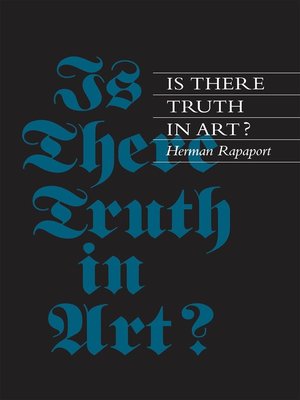
Sign up to save your library
With an OverDrive account, you can save your favorite libraries for at-a-glance information about availability. Find out more about OverDrive accounts.
Find this title in Libby, the library reading app by OverDrive.



Search for a digital library with this title
Title found at these libraries:
| Loading... |
The question posed by Herman Rapaport, in the title of this book, is intended both seriously and ironically. It is not Rapaport's purpose to debate whether or not truth resides in art. The title points rather to his belief that truth needs to be reconceptualized in the light of continuing efforts to deconstruct and to discredit the notion of truthfulness in art.
The question of art's truthfulness persists because truth in art is neither an entity or content that has been injected into the work, nor a transcendental concept or ground that exists outside it. Moreover, when used in relation to art, Rapaport says, truth means something quite different from conventional definitions of the term. Indeed, a central question that informs the book is the return of truth at the far side of its deconstruction.
Is There Truth in Art? includes chapters on atonal music, environmental art, modern German and French poetry, contemporary French fiction, experimental French film, and a photograph taken by the National Socialists during the destruction of the Warsaw ghetto. Determining how truth can be said to occur in these examples, Rapaport maintains, requires analysis in each instance. He draws chiefly upon the thinkers who have radically reformulated questions about truth—Nietzsche, Heidegger, Derrida, and Levinas—and uses their writings to explore the works under analysis.






